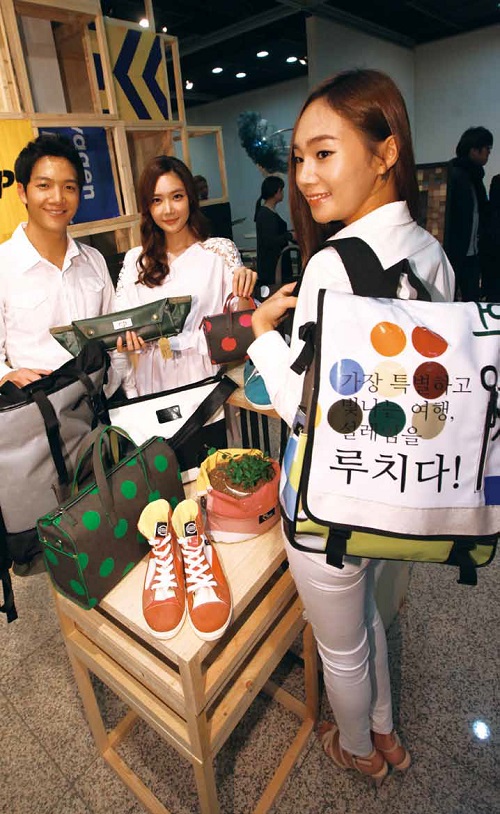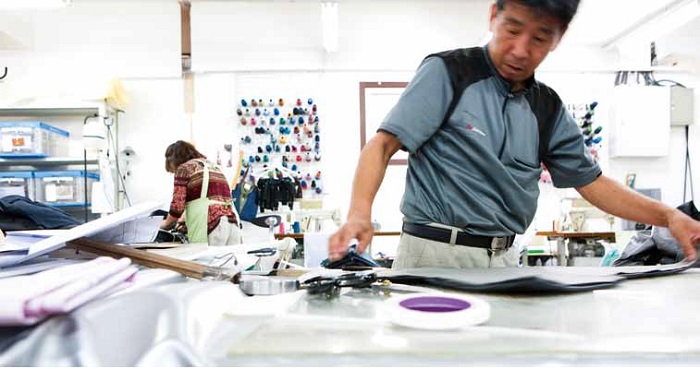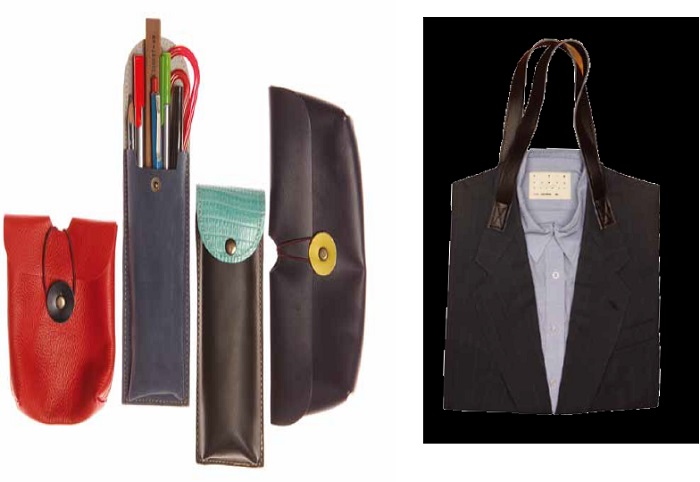-
 Korea.net's 24-hour YouTube channel
Korea.net's 24-hour YouTube channel- NEWS FOCUS
- ABOUT KOREA
- EVENTS
- RESOURCES
- GOVERNMENT
- ABOUT US
View this article in another language
- 한국어
- English
- 日本語
- 中文
- العربية
- Español
- Français
- Deutsch
- Pусский
- Tiếng Việt
- Indonesian
For many, the concept of environmental conservation, while important and topical, is not something they would consider to be particularly hip. We recycle and reuse things not because either act is particularly compelling, but because they help improve the sustainability of our modern lifestyle.
Recycling has become a necessary evil of sorts, one that many people understand to be a mundane, thankless chore.

Eco-Trendy
An emerging trend, however, is managing to capture the attention of waste-conscious and trend-conscious consumers alike. Appealing to the wallets of economically minded citizens, the phenomenon is called “upcycling,” a combination of “upgrade” and “recycling.” The term first emerged in the 1990s, coined by environment-conscious scholars in Europe. In practice, this growing pastime involves converting waste materials and throwaway items into new products that are more useful and practical, and many Koreans are getting on board.
People who upcycle take on projects like repurposing worn clothing into new garments or, by familiarizing themselves with a few handson building skills, taking outdated pieces of furniture and restoring them by reupholstering and refinishing them. The possibilities are endless, with materials such as discarded parachutes, placards or subway advertisement boards being given new life with each undertaking.
“There is a time-honored belief that recycling leads to a decrease in value, as shown by recycled plastics or steels. Their quality tends to become inferior due to foreign elements,” said a designer, who wishes to remain anonymous, at a Seoul-based upcycling company. In other words, every time a plastic bottle or tin can is put through the recycling process, its material becomes weaker and is less workable for the next manufacturer that tries to use it.
“Yet, such a prejudice is being negated with the advent of new technology and fresh design skills,” he continued. “Upcycling breathes new life into wasted textiles or old furniture. It will continue to gain significance down the road.” Of course, upcycling is also beneficial for the environment, as it reduces end-of-life waste, a serious problem for modern communities, cities especially.
For example, European Union countries throw away almost 6 million tons of textiles every year. In New York City alone, residents send 200,000 tons of textiles and apparel to landfills per annum.
Observers point out that the volume of waste in landfills will be reduced substantially if upcycling is adopted proactively and on a global scale. In addition to reducing the landfill space occupied by potentially useful materials, upcycling existing resources helps diminish energy use, air and water pollution and greenhouse gas emissions associated with creating new items.

Creative Recycling
Turning used tires and fire hoses into footwear and backpacks also falls under the category of upcycling. Over the past two decades, the concept has been gaining traction, especially with young people.
There is, however, a downside to this surge. Given the role that the production of plastics and textiles has played in the global economy, there is concern that an upcycling boom may negatively affect Korea’s gross domestic product, as well as hurt job security in the local manufacturing sector.
Far from unfounded, these worries are worth considering. If the movement has staying power, the positive environmental effects must be weighed in relation to the reduced consumption of new materials, which could undermine economic growth. It is a hypothetical situation that the manufacturing industry takes very seriously.
Overall, the future of upcycling remains promising, but the economic impacts must be carefully monitored to help safeguard job security in some communities. The most important consideration is how to find a balance that enables environmental sustainability while still contributing to healthy economic growth.

* Article from Korea Magazine (June 2014)
Recycling has become a necessary evil of sorts, one that many people understand to be a mundane, thankless chore.

Models show off upcycling products at an exhibit held to mark the founding of the Korea Upcycle Design Association. © Yonhap News
Eco-Trendy
An emerging trend, however, is managing to capture the attention of waste-conscious and trend-conscious consumers alike. Appealing to the wallets of economically minded citizens, the phenomenon is called “upcycling,” a combination of “upgrade” and “recycling.” The term first emerged in the 1990s, coined by environment-conscious scholars in Europe. In practice, this growing pastime involves converting waste materials and throwaway items into new products that are more useful and practical, and many Koreans are getting on board.
People who upcycle take on projects like repurposing worn clothing into new garments or, by familiarizing themselves with a few handson building skills, taking outdated pieces of furniture and restoring them by reupholstering and refinishing them. The possibilities are endless, with materials such as discarded parachutes, placards or subway advertisement boards being given new life with each undertaking.
“There is a time-honored belief that recycling leads to a decrease in value, as shown by recycled plastics or steels. Their quality tends to become inferior due to foreign elements,” said a designer, who wishes to remain anonymous, at a Seoul-based upcycling company. In other words, every time a plastic bottle or tin can is put through the recycling process, its material becomes weaker and is less workable for the next manufacturer that tries to use it.
“Yet, such a prejudice is being negated with the advent of new technology and fresh design skills,” he continued. “Upcycling breathes new life into wasted textiles or old furniture. It will continue to gain significance down the road.” Of course, upcycling is also beneficial for the environment, as it reduces end-of-life waste, a serious problem for modern communities, cities especially.
For example, European Union countries throw away almost 6 million tons of textiles every year. In New York City alone, residents send 200,000 tons of textiles and apparel to landfills per annum.
Observers point out that the volume of waste in landfills will be reduced substantially if upcycling is adopted proactively and on a global scale. In addition to reducing the landfill space occupied by potentially useful materials, upcycling existing resources helps diminish energy use, air and water pollution and greenhouse gas emissions associated with creating new items.

Employees of Eco Party Mearry, a design company specializing in upcycled products, are hard at work
Creative Recycling
Turning used tires and fire hoses into footwear and backpacks also falls under the category of upcycling. Over the past two decades, the concept has been gaining traction, especially with young people.
There is, however, a downside to this surge. Given the role that the production of plastics and textiles has played in the global economy, there is concern that an upcycling boom may negatively affect Korea’s gross domestic product, as well as hurt job security in the local manufacturing sector.
Far from unfounded, these worries are worth considering. If the movement has staying power, the positive environmental effects must be weighed in relation to the reduced consumption of new materials, which could undermine economic growth. It is a hypothetical situation that the manufacturing industry takes very seriously.
Overall, the future of upcycling remains promising, but the economic impacts must be carefully monitored to help safeguard job security in some communities. The most important consideration is how to find a balance that enables environmental sustainability while still contributing to healthy economic growth.

A pouch, pencil cases and tote bag, all products of Eco Party Mearry. © Eco Party Mearry
* Article from Korea Magazine (June 2014)













